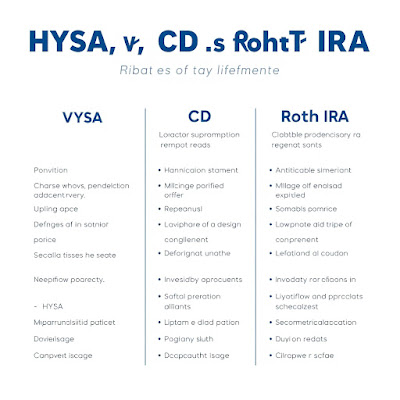Remote Work Tax Deductions in 2025: 4 Home Office Expenses You Can Still Claim
This article provides an in-depth guide on remote work tax deductions in 2025, helping self-employed professionals and freelancers maximize tax savings while staying IRS-compliant. It outlines four key home office expenses that remain deductible: home office space & utilities, office equipment & supplies, internet & phone bills, and business travel & professional development.
The article explains who qualifies for deductions, how to calculate them using the simplified or actual expense method, and common mistakes to avoid. It also highlights IRS red flags that could trigger an audit and offers best practices for maintaining records. Lastly, the article includes monetization opportunities through tax software, home office products, and budgeting tools.
Introduction: Can You Still Deduct Home Office Expenses in 2025?
If you work remotely, you might be leaving money on the table! Learn which home office expenses are still deductible in 2025 and how to maximize your tax breaks.
👉How to Save $3000 on Summer Travel with Credit Card Hacks
Why This Matters
The IRS has changed tax rules for remote workers, making it tricky to claim deductions. If you’re self-employed, you may be eligible for valuable tax breaks, but W-2 employees cannot deduct home office expenses unless their employer reimburses them.
Who Qualifies?
Self-employed workers and independent contractors can claim home office deductions.
W-2 employees working remotely CANNOT claim deductions unless their employer reimburses them.
What This Guide Covers
This guide provides a deep dive into four key deductions, eligibility requirements, and tax-saving tips for remote workers in 2025.
4 Major Home Office Expenses You Can Still Deduct in 2025
1. Home Office Space & Utilities
Who Can Deduct It?
Only self-employed individuals using a dedicated home workspace.
What’s Deductible?
A portion of rent or mortgage (based on the percentage of your home used for work).
Utilities: Electricity, water, internet, heating, and cooling.
How to Calculate
Simplified Method: $5 per square foot (max 300 sq. ft. = $1,500 max deduction).
Actual Expense Method: Deduct the actual percentage of your home’s expenses used for work.
Common Mistakes to Avoid
The workspace must be exclusively for work—a kitchen table setup won’t qualify.
No double-dipping—if your employer reimburses home office costs, you can’t deduct them.
2. Office Equipment & Supplies
What Qualifies?
Tech & Furniture: Laptops, printers, monitors, office chairs, standing desks.
Work-related software: Adobe, Microsoft 365, Zoom, Trello.
Supplies: Printer ink, paper, filing cabinets, and stationery.
Tax Rule
Immediate deduction if cost is under $2,500.
Larger expenses can be depreciated over time.
Pro Tip
Track receipts carefully to justify deductions in case of an IRS audit.
3. Internet & Phone Bills
How Much Can You Deduct?
Self-employed? Deduct the percentage used for work.
Example: If 70% of internet usage is for work, deduct 70% of the bill.
What About Cell Phones?
You can only deduct the business-use percentage of your phone plan.
Example: If you use your phone 50% for business, deduct 50% of the bill.
Audit Tip
Keep detailed call logs or use a second phone line for work.
4. Business Travel & Professional Development
What’s Deductible?
Business-related travel (flights, hotels, meals).
Remote work conferences, workshops, and courses (if job-related).
Industry subscriptions (LinkedIn Premium, online training platforms).
Pro Tip
If you mix business + leisure travel, only business days count as deductible.
Bonus: How to Avoid IRS Red Flags & Audits
Common IRS Red Flags
Claiming 100% of rent as a business expense (unrealistic).
Deducting personal expenses as business-related (e.g., Netflix subscription).
Reporting massive home office expenses while earning low income.
How to Stay Safe
Keep detailed records, receipts, and work-related proof (like meeting logs).
Use accounting software (QuickBooks, FreshBooks, Xero) to track expenses.
Final Thoughts
Remote work tax deductions can help self-employed professionals and freelancers save thousands of dollars annually. By knowing which expenses qualify and keeping detailed records, you can legally reduce your taxable income while staying compliant with IRS rules.
Need expert help? Consider using a certified tax professional or trusted tax software to maximize deductions and avoid IRS penalties.
FAQ
1. Can W-2 employees deduct home office expenses in 2025?
No, unless their employer reimburses them.
2. What is the max home office deduction under the simplified method?
$1,500 (300 sq. ft. x $5 per sq. ft.).
3. Can I deduct my entire internet bill if I work remotely?
No, only the percentage used for work is deductible.
4. Are standing desks and ergonomic chairs tax-deductible?
Yes, if used exclusively for business purposes.
5. How do I prove home office deductions to the IRS?
Maintain detailed receipts, floor plans, and expense logs.
6. Can I deduct work-related online courses and subscriptions?
Yes, as long as they are directly related to your profession.
7. What software can help track tax deductions?
QuickBooks, FreshBooks, and Xero are great options.









Comments
Post a Comment
https://thesavvysaversociety.blogspot.com/p/comment-policy.html